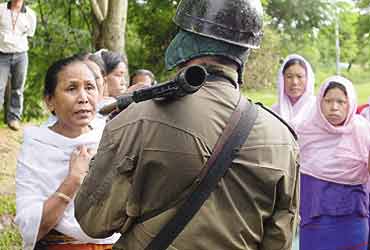
By: Bibhu Prasad Routray
Barely 43 deaths of civilians, security forces and militants have been registered in Manipur in the first eight months of 2011. If these trends continue for another four months, this State in India’s northeast would register less than 100 deaths in a year, for the first time since 1992. In fact, it would better last year’s total fatalities of 138, which was the lowest for the last 20 years. Home Minister P Chidambaram’s September 2009 statement that “Manipur remains resistant to counter-insurgency interventions”, is no longer valid.
Return to near normalcy is not because of a sudden dip in violence liable to be interpreted as a tactical retreat by the militants, much like what happened in theatres that are affected by Left-wing extremists. It is rather a progressive decline since 2008. The diminishing numbers (485 in 2008, 416 in 2009 and 138 in 2010) is a clear indication towards a decline in militant capacities, which has not only been imposed by the suspension of operations (SoO) agreements with over a dozen of militant formations, but also by the neutralisation of top ranking leaders of outfits including chairman of United National Liberation Front (UNLF), R K Meghen. Meghen led UNLF, the largest and the most powerful militant group of Manipur for last 35 years and was arrested in December 2010. Commander-in-chief of Kangleipak Communist Party (KCP) Malengba was arrested on 5 May from Bangalore. Security forces operating in the State agree that such recurrent neutralisation has taken wind out of the sails of these armed groups.
[box type=”quote” size=”small” color=”blue” align=”right”]Home Minister P Chidambaram’s September 2009 statement that “Manipur remains resistant to counter-insurgency interventions”, is no longer valid.[/box]Manipur remains in the category of ‘problem areas’ for the Indian government. However, an analysis of the problems that have confronted the state and its population in recent times are mostly administrative and political in nature. The protracted Naga conflict in neighbouring Nagaland subjects the state to recurrent shutdowns. But shutdown also happens internally as well. The ongoing blockade of Highway No. 39 and No. 53 is the result of the unfulfilled demand for the establishment of the Sadar hills district, an internal issue between the Kukis and Nagas in Manipur. There isn’t much role for the Army personnel in such issues. Even problems like rampant militant extortion are better tackled by the Manipur police.
I would argue the same way I did in an article on activist Irom Sharmila in 2010. If militant violence created raison d’etre for the Army to move into Manipur and promulgation of the Armed Forces (Special Powers) Act [AFSPA] in the State, the lack of violence necessitates that New Delhi reviews its position. The onset of relative peace in Manipur throws up an opportunity to embark upon much needed task of assigning the state police the lead role in counter-insurgency duties. It also opens up the possibility of withdrawing AFSPA from few other areas in the State, where the Army’s role can be tactically downgraded. Reassigning primacy to the Army and bringing back the AFSPA, in case the situation worsens, would not be too difficult a task. Opportunities certainly exist to make a new beginning for the State, instead of condemning it to hopelessness in perpetuity.
Bibhu Prasad Routray, a former deputy director in the National Security Council Secretariat, is a Singapore-based independent analyst. E-mail him at bibhuroutray[at]gmail.com and follow him on Twitter @BibhuRoutray
[box type=”info”]The above article was sent to Kanglaonline.com by Bibhu Prasad Routray. View Bibhu’s Blog[/box]




